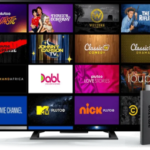
Introduction to Streaming Service
In the ever-evolving world of digital entertainment, choosing how to watch your favorite content is no longer a simple decision. We’ve come a long way from cable subscriptions and DVD rentals. Now, we have a buffet of choices—IPTV, Netflix, Hulu, Amazon Prime, Disney+, and countless others. But with all these options, one question still lingers in the minds of many: what’s the real difference between IPTV and mainstream streaming platforms like Netflix?
While these services may appear similar on the surface—they both use internet connections to deliver content—their architecture, content offerings, legal frameworks, and user experiences are drastically different. This article breaks it all down in simple terms. Whether you’re a binge-watcher, a sports fanatic, or just someone trying to cut the cable cord, understanding these differences can help you choose the best fit for your lifestyle.
So, let’s untangle the wires and dig deep into what truly separates IPTV from services like Netflix and other mainstream streaming platforms.
Understanding IPTV
What is IPTV?
IPTV stands for Internet Protocol Television. Simply put, it delivers television content over the internet rather than through traditional satellite or cable formats. Unlike services like Netflix that rely on pre-loaded libraries of content, IPTV provides a more TV-like experience with live broadcasts, scheduled programming, and on-demand content all rolled into one.
With IPTV, you’re essentially watching TV channels in real-time just as you would with cable, but everything is streamed via your internet connection. Think of it as digital cable—but smarter, cheaper, and more flexible.
IPTV services are often favored by people looking to cut costs without sacrificing live sports, news channels, and international programming. However, the term “IPTV” also covers a wide variety of services, some of which operate in legal gray areas. So, understanding what kind of IPTV you’re using is crucial.
How IPTV Works
At its core, IPTV uses your broadband internet connection to transmit TV signals. Here’s how it breaks down:
-
Content is encoded into IP packets (the same way your emails and websites work).
-
These packets are sent over your internet connection.
-
You use a device (like a smart TV, set-top box, or even your phone) to decode and display the content.
This setup allows IPTV to offer a seamless experience without relying on traditional broadcast infrastructure. Unlike Netflix, which requires you to select and play individual shows or movies, IPTV often delivers a continuous stream of programming that mirrors the traditional TV experience.
Some IPTV platforms even offer advanced features like cloud DVR, time-shifted viewing, and multi-screen support, which are normally not available with services like Netflix unless you’re paying top-tier prices.
Types of IPTV Services (Live TV, VOD, Time-shifted Media)
IPTV isn’t just a one-size-fits-all service. There are different types of IPTV based on the kind of content and delivery format:
-
Live TV: This is the most traditional form, replicating the live broadcast experience of cable TV. Think sports events, news channels, or live concerts.
-
VOD (Video on Demand): Similar to Netflix, but offered by IPTV providers. You can choose from a library of content and watch it at your convenience.
-
Time-shifted Media: This allows you to watch previously aired content. Maybe you missed the big game or last night’s episode—time-shifted IPTV lets you catch up.
Each type serves a unique need, and some providers bundle all three. For users who want the best of both worlds—live content and on-demand shows—IPTV often becomes a compelling choice.
Introduction to Netflix and Mainstream Streaming Service
What is Netflix?
Netflix is arguably the most recognizable name in streaming. Launched in 1997 as a DVD rental service, Netflix transitioned to streaming in 2007 and has since become a global powerhouse in digital entertainment. Today, it offers thousands of TV shows, movies, documentaries, and original content across multiple genres.
Unlike IPTV, Netflix does not provide live TV or scheduled programming. Everything is on-demand, which means you decide what to watch and when. This “watch on your terms” approach has revolutionized the entertainment landscape and even changed how content is produced and consumed.
Netflix’s strength lies in its original programming, high production value, and personalized recommendations powered by sophisticated algorithms. It’s user-friendly, legal, and offers reliable streaming quality on almost any device you own.
Other Major Streaming Service (Hulu, Disney+, Prime Video)
Netflix might be the OG, but it’s far from the only player in the streaming game. Here are a few other titans:
-
Hulu: Known for its next-day access to current TV episodes and strong lineup of original series.
-
Disney+: The home of everything Disney, Marvel, Star Wars, and Pixar.
-
Amazon Prime Video: Included with Prime membership, offering a mix of movies, series, and originals.
Each of these services competes on content exclusivity, interface design, pricing, and original productions. But none of them provide live TV in the traditional sense (except for hybrid services like Hulu + Live TV, which blends both models).
How Traditional Streaming Service
Streaming services like Netflix operate on a cloud-based server-client model. Here’s how it works:
-
Content is stored on servers.
-
When a user selects a show or movie, the server streams it directly to their device.
-
Advanced compression technologies ensure that users get buffer-free, high-definition playback—even on slower connections.
This model provides unmatched convenience and scalability, allowing millions of users to watch what they want, when they want, without the limitations of scheduled programming.
The downside? You’re limited to the content the service owns or licenses. Unlike IPTV, which might offer hundreds of live channels, Netflix is more about depth of content than breadth of real-time programming.
Key Differences Between IPTV and Netflix & Streaming Service
Delivery Technology
Let’s start with the tech that powers these platforms—it’s where the biggest differences lie. IPTV and Netflix might both use the internet, but how they deliver content is fundamentally different.
IPTV typically uses a multicast delivery system, streaming live content directly to your device in real-time. This method mimics the linear structure of traditional TV, broadcasting shows as they’re scheduled. This approach is especially useful for live sports, news, and event-based programming.
Netflix, on the other hand, operates through unicast streaming, meaning content is streamed individually to each user on demand. It doesn’t matter if a million people watch the same movie at the same time—each person gets their own stream. This allows for greater personalization but removes any real-time aspect from the equation.
In short:
-
IPTV = Broadcast-style, real-time streaming
-
Netflix = On-demand, user-specific streaming
This fundamental difference influences everything from content types to server load management to user experience.
Content Access and Availability for Streaming Service
This is where things get spicy. IPTV often provides broader access to content, especially when it comes to international channels, live events, and cable TV alternatives. Some IPTV providers even offer premium content (sometimes dubiously obtained), making them a go-to for users who want access to virtually everything.
Netflix and its counterparts, however, operate under strict content licensing agreements. You only see what Netflix has the rights to show in your country. That’s why your Netflix library in the US might look totally different from the one in the UK or India.
With IPTV, regional restrictions are often bypassed—though this can sometimes land in the legal gray zone. But if you’re after variety and real-time content, IPTV typically offers more.
The trade-off? Legitimacy and content quality. Netflix spends billions producing original shows and acquiring high-end content. IPTV might have more, but Netflix has better.
Pricing Models and Subscription Flexibility For Streaming Service
When it comes to money, things get interesting. IPTV services vary widely in pricing. You’ll find some budget-friendly providers offering hundreds of channels for just a few bucks a month. Others might cost a bit more but include extras like PPV (Pay-Per-View) content, sports packages, or multi-device support.
Netflix, meanwhile, operates on a tiered subscription model:
-
Basic: Lower video quality, fewer devices.
-
Standard: HD content, two devices at once.
-
Premium: Ultra HD and four devices simultaneously.
Streaming platforms like Disney+ and Prime Video follow similar structures, though bundle options (like Amazon Prime perks) can add extra value.
Where IPTV often wins is in cost efficiency—you generally get more channels and features for less money. However, you might be sacrificing reliability, legal safety, and support services.
User Experience and Interface
Let’s face it: we’re spoiled when it comes to user experience, and Netflix has pretty much set the gold standard here. With slick menus, custom profiles, intelligent recommendations, and seamless cross-device syncing, it’s hard to beat.
IPTV platforms, especially the lesser-known ones, often suffer from clunky interfaces, outdated EPGs (Electronic Program Guides), and laggy performance. That said, some premium IPTV providers are starting to catch up with clean, modern UIs and personalized dashboards.
But here’s the kicker—Netflix doesn’t do live content, so its interface is optimized for on-demand browsing, not channel surfing. IPTV, however, replicates the TV experience, complete with channel numbers, categories, and remote-like navigation.
If you love flipping through channels or watching live news/sports, IPTV feels more natural. If you prefer curated binge sessions with zero buffering and personalized suggestions, Netflix wins by a mile.
Content Licensing and Legal Aspects
This is where lines get blurred, especially for IPTV. A large portion of IPTV services operate without proper licenses to broadcast certain channels or content. This puts them in a risky category, both for providers and users.
Netflix and its peers are fully licensed, transparent, and play by the legal book. They negotiate with studios, produce original content, and ensure everything they distribute is above board.
Using IPTV doesn’t automatically make you a lawbreaker—but you should be cautious. Many services stream pirated content without users even knowing. Authorities in multiple countries have started cracking down on illegal IPTV platforms, so there’s a real risk involved.
When it comes to peace of mind, legal clarity, and long-term reliability, Netflix and other mainstream services have the upper hand. IPTV might win on content availability, but it often loses on legal ground.








